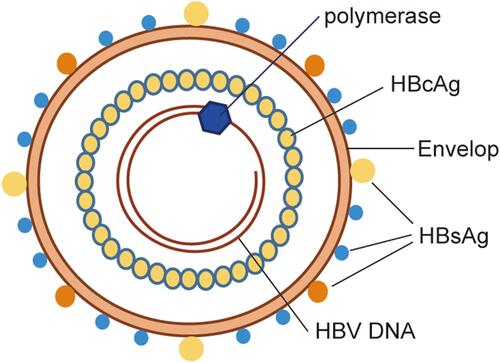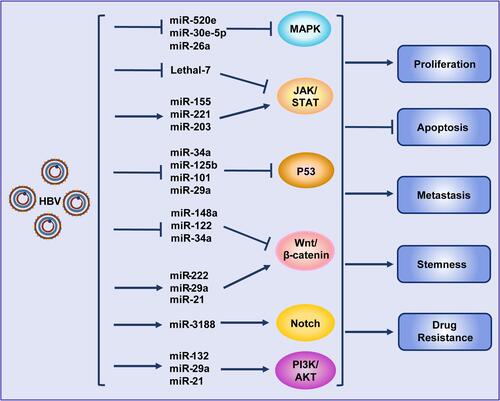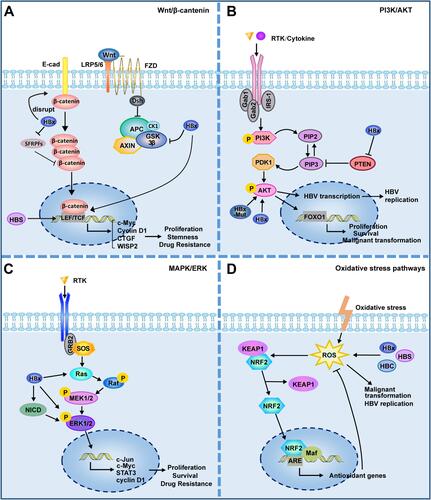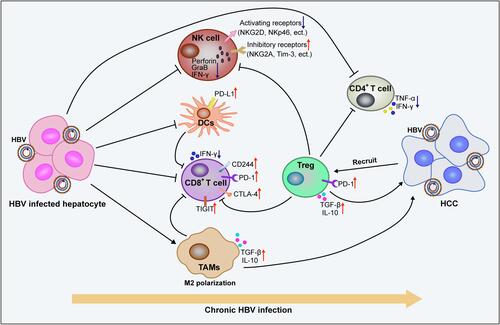Figures & data
Figure 1 Schematic representation of HBV structure. The intact HBV consists of a double envelope and a core granule. The lipid bilayer contains the large, medium and small protein forms on the envelope, collectively known as HBsAg. The surface of the core particle is the true viral capsid, which is composed of the HBcAg. The core particle contains circular and partially double-stranded DNA and polymerase.

Figure 2 Hepatitis B virus promotes hepatocellular carcinoma by intervening various signal pathways through different microRNAs. Lines ending with arrows or bars indicate promotion or inhibitory effects, respectively.

Figure 3 HBV is involved in activation of cancer-related signaling pathways. (A) Wnt/β-catenin signalling pathway. HBV can activate Wnt/β-catenin signaling by activating TCF or inhibiting GSK3β; HBx can silence the SFRPs to activate Wnt signaling; HBx promotes the disintegration of the E-cadherin complex with β-catenin; HBsAg can up–regulate the expression of LEF-1. (B) PI3K/AKT signalling pathway. HBx can inhibit PTEN, a suppressor of PIP3; HBx and HBx mutant can activate Akt directly. (C) MAPK/ERK signalling pathway. HBx can activate Ras and ERK directly; HBx can activate ERK by activating Notch signal. (D) Oxidative stress pathways. The structural proteins of HBV, HBx, HBS and HBC, can induce ROS production. ROS has been shown to play a direct promoting role in viral replication and malignant transformation. ROS can activate KEAP1/NRF2/ARE pathway, which plays an important role in resistance to ROS. Lines ending with arrows or bars indicate activating or inhibitory effects respectively.

Figure 4 Chronic HBV infection promotes the formation of immunosuppressive microenvironments and promotes the malignant transformation of liver cells. Long lines ending with arrows or bars indicate activating or inhibitory effects respectively. Short arrows pointing up or down indicate up-regulated or down-regulated.

